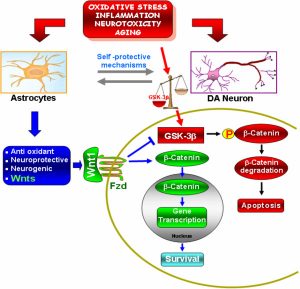
Have you ever met someone who has schizophrenia? Odds are, probably not, but if you were to ask someone what schizophrenia is, they generally would respond with, “Oh, that’s the one with hallucinations”. Schizophrenia is highly misunderstood and negatively portrayed in the media as a disorder in which people only have vivid hallucinations and commit violent acts. While this can be a symptom of schizophrenia, it doesn’t happen in every case, and there are a variety of other symptoms that are overlooked.
What is Schizophrenia?
Schizophrenia is a neurodevelopmental disorder that usually has an onset in early adulthood. It has a collection of positive and negative symptoms; these positive symptoms are what are highlighted in the media. Some of the positive symptoms include delusions, hallucinations, and disorganized thinking. The negative symptoms are often overshadowed and forgotten to the public but can be the most troubling for the patient and include apathy, a flat affect, and asociality. Due to the complexity of schizophrenia, the etiology and treatments are hot topics in research but still unknown. There have been movements in uncovering the genetics though, and researchers have begun to better understand what is going on neuroanatomically and neurochemically, perhaps weaving a pathway for better treatments.
Dissecting the Brain’s Anatomy
The brain of schizophrenia is rather unique. Brains are comprised of gray matter and white matter. White matter is composed of axons, which send nerve signals throughout the body so it can move, react to stimuli, and use its senses like sight or touch. Gray matter is mainly composed of neuronal cell bodies and synapses; this allows nerve signals to complete their signal so the body can complete an action. In schizophrenia though, both gray matter and white matter are impacted. This disrupts neural connectivity. The white matter is much weaker, meaning the signals being sent aren’t as strong, and the gray matter is substantially decreased in volume. A majority of the brain in schizophrenia is shrunken, especially within the prefrontal cortex and the temporal regions. These regions are involved in memory, decision-making, motor movement, and processing auditory and visual stimuli. All of these regions are heavily impaired in schizophrenia, resulting in the variety of symptoms patients endure. The low gray matter found within schizophrenia patients is partially hereditary and can also be the result of intrauterine risk exposure.
Neurochemical Aspects
 While understanding the neuroanatomy helps researchers localize what specific regions to target in the brain, it’s important to understand what is happening neurochemically to aid these symptoms and create disruptions in the frontal and temporal regions of the brain. The Wnt pathway is highly dysregulated in schizophrenia due to the overactivation of dopamine, which is a neurotransmitter that helps regulate emotional and motor responses. Dopamine binds to an inhibitory receptor known as the D2 receptor and stimulates the enzyme glycogen synthase kinase 3 (GSK3) to destroy the protein beta-catenin. The Wnt pathway regulates beta-catenin in order to transcribe developmental genes in the brain, but in schizophrenia, this protein is destroyed by an excess of dopamine and GSK3, and the developmental functioning can no longer occur. This ultimately helps the symptoms to occur because the developmental pathway that transcribes cognitive functioning genes is no longer working correctly.
While understanding the neuroanatomy helps researchers localize what specific regions to target in the brain, it’s important to understand what is happening neurochemically to aid these symptoms and create disruptions in the frontal and temporal regions of the brain. The Wnt pathway is highly dysregulated in schizophrenia due to the overactivation of dopamine, which is a neurotransmitter that helps regulate emotional and motor responses. Dopamine binds to an inhibitory receptor known as the D2 receptor and stimulates the enzyme glycogen synthase kinase 3 (GSK3) to destroy the protein beta-catenin. The Wnt pathway regulates beta-catenin in order to transcribe developmental genes in the brain, but in schizophrenia, this protein is destroyed by an excess of dopamine and GSK3, and the developmental functioning can no longer occur. This ultimately helps the symptoms to occur because the developmental pathway that transcribes cognitive functioning genes is no longer working correctly.
The Future of Schizophrenia
Most treatments that exist today for schizophrenia are antipsychotics, which work to inhibit dopamine and GSK3 to allow activation of the Wnt pathway and beta-catenin. Antipsychotics help control and reduce the symptoms of schizophrenia so the patient can live a more normal life and gain back independence. That said, these medications don’t cure psychosis and can have severe side effects. Gathering a better understanding of the etiology of schizophrenia will help provide better pharmacological treatments for patients and create more knowledge on the risks that increase ones’ vulnerability to the disorder (genetics and intrauterine environment). Hopefully, findings of the etiology surround schizophrenia will allude to a more positive view of the disorder and provide an improved treatment method to give control back to those suffering from schizophrenia.